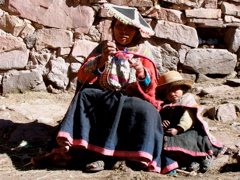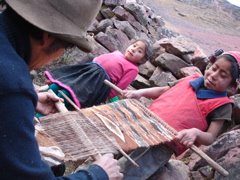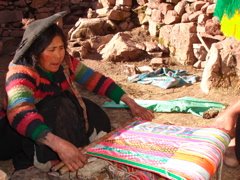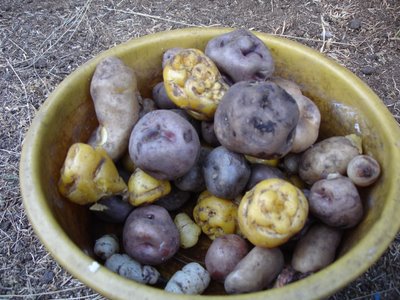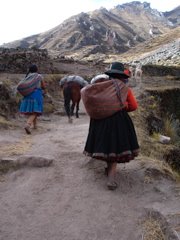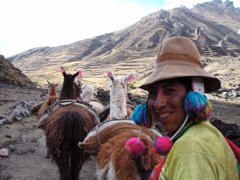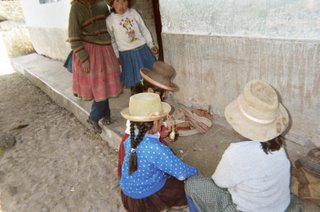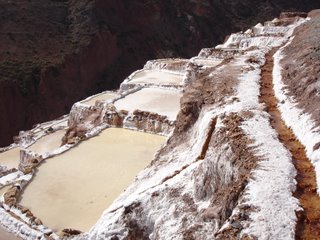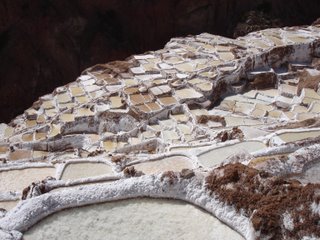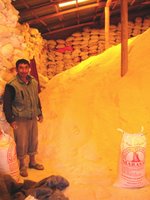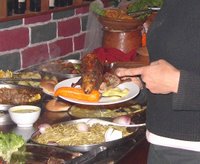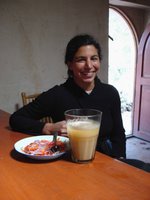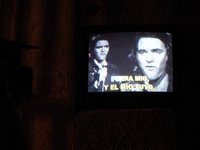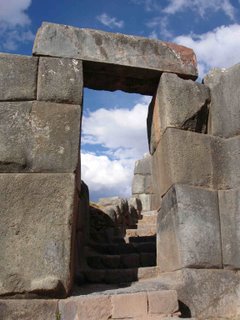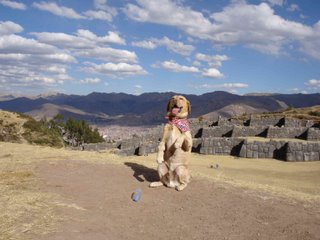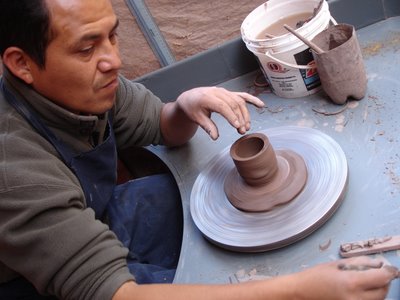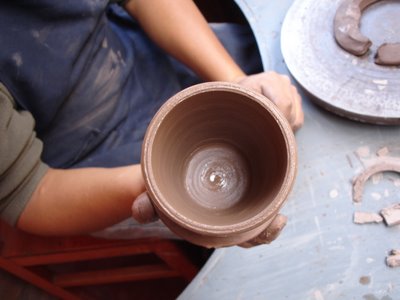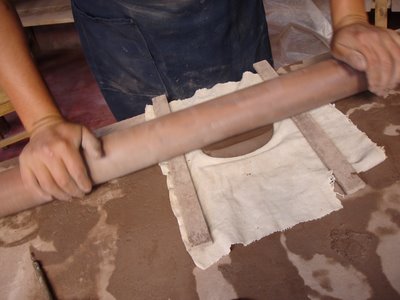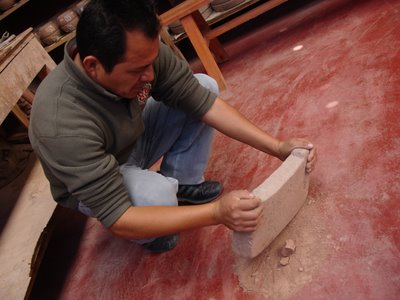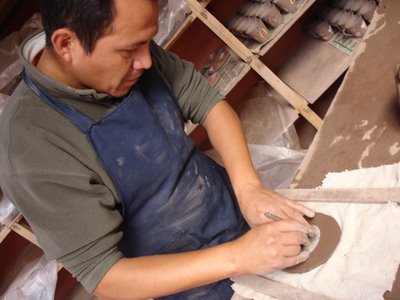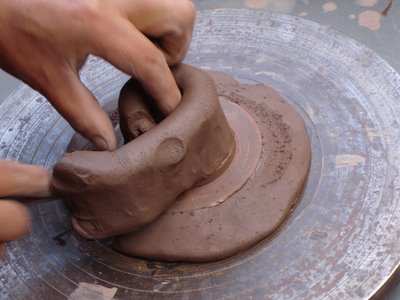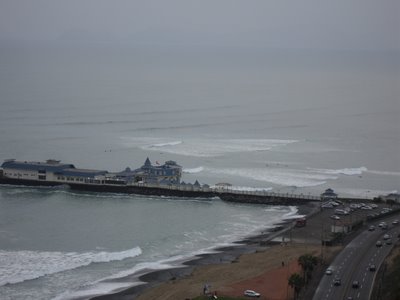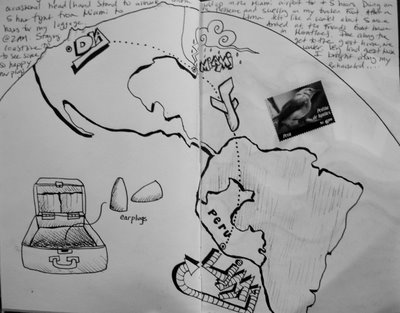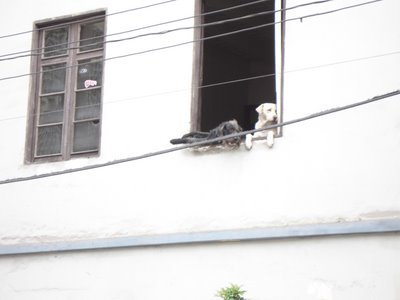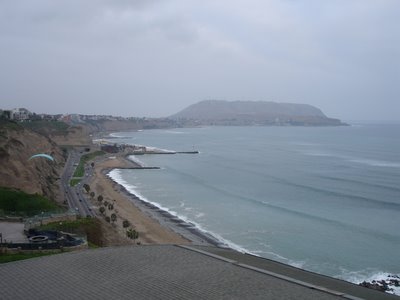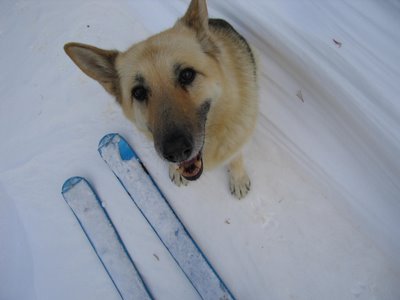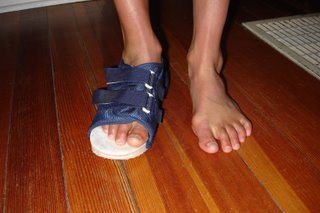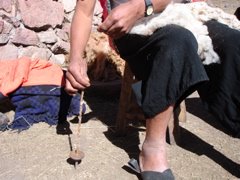
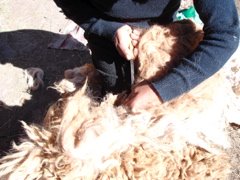

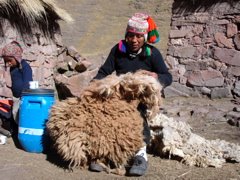

Cold morning here in Mucmoca, which means "blooming flower" in the Quechua language. Once the sun appears over the mountains I move outside to receive its rays of warmth. Sitting outside sipping more mate de coca and watching these crazy quacking ducks that most likely will be consumed in the next few months. I am constantly amazed at the similarities I find between the Peruvians living up in the Andes and the Mongolians. They share some of the same food, cooking methods, and appearances.
This morning was my first day to learn the weaving process, which is quite involved. The weaving preparation process includes the gathering of wool, and its spinning, plying and dyeing. Many techniques and designs that exist today have survived two thousand years of being handed down from older to younger weavers. The people of the Andes have always utilized materials from their environment in order to survive in their harsh mountainous landscape. For thousands of years, clothing for warmth and protection has been made from animal fibres. Before the conquering Spanish arrived, highland peoples herded llamas and alpacas, using their wool for weaving cloth, braiding ropes, and other needs. Today these practices continue in some areas. Sheep, which were introduced to the highlands by the Spanish in the 1500s, are also used for making cloth as well as knitting.
Often I see people of the Andean highlands walking along footpaths and roadways whirling their puchkas (drop spindles) before them as they spin the wools, cottons and alpaca that become some of the most vibrant and complex weaving. Spinning is one of several stages in the preparation of wool for weaving or knitting.
Dyeing of the wool is done after the first spinning. The spun wool is placed a a pot of dye and then laid out ot dry before being spun a second time. All colors come from the surrounding enviornment. There does seem to be a movenment to use more natural dyes and avoid the synthetics. The color red is obtained from the female cochineal insect Dactylopius coccus, which lives on the nopal cactus. Yellow comes from lichen and taro trees of coastal valleys in Peru. Black is obtained from logwood and green comes from vaious plants. Blue is more difficult to find they use flor de tarhui and also turquoise and lapis azul, Indigo is also used in Peru.
Some info on COCHINEAL (Dactylopius coccus):
A brilliant red dye is produced from cochineal insects, which feed on the prickly pear cactus (Opuntia) - in particular, the species called nopal. The insects manufacture a rich maroon pigment and they store this pigment in body fluids and tissues. The dye properties of cochineal were discovered by ancient indigenous groups who would dry the female insects in the sun, and then grind the bodies to produce a powder. Depending on the mordant used, dyers could achieve not only beautiful crimsons and pinks, but also near-black and even purple shades. To produce one pound of cochineal powder, it took 70,000 dried insects. An acre planted with nopal cacti yielded 100 to 150 kg of cochineal powder.
